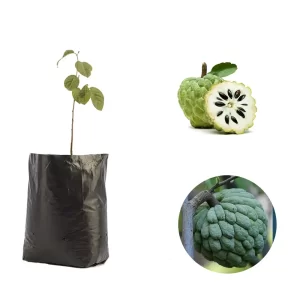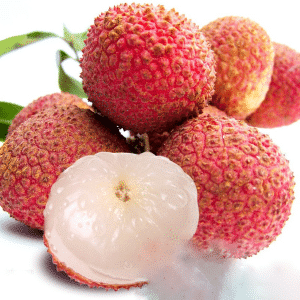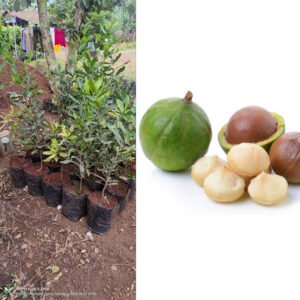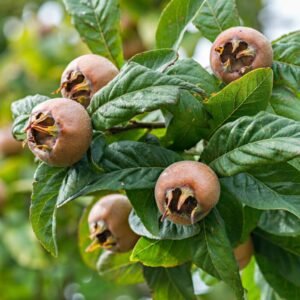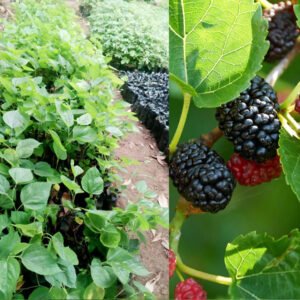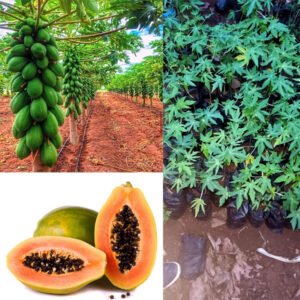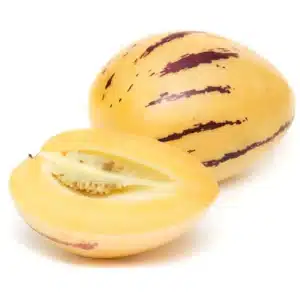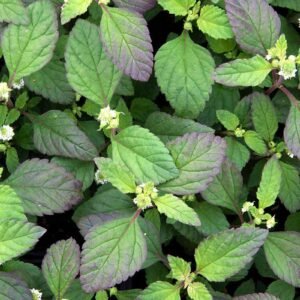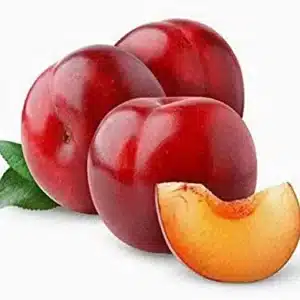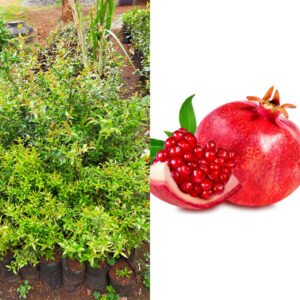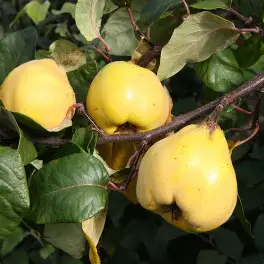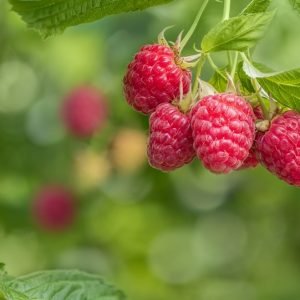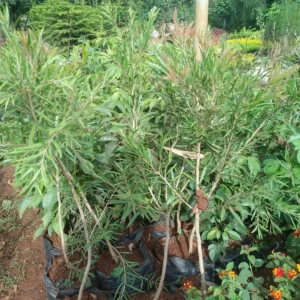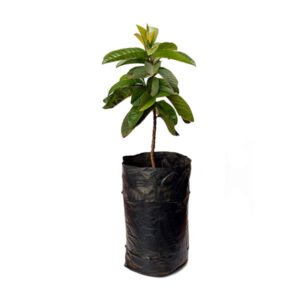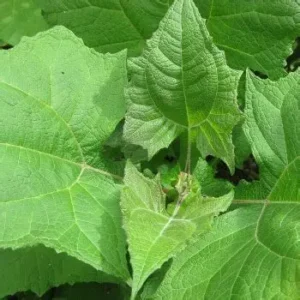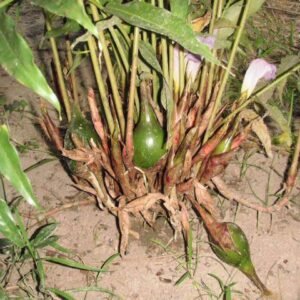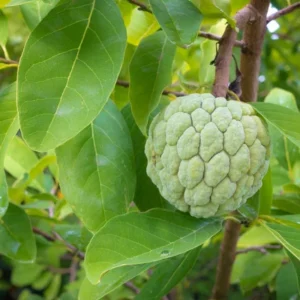Recommended Products
Custard Apple Fruit Seedling
Custard Apple Fruit Seedling
Annona reticulata
Have custard apple at hand on your balcony or verandah!
This grafted fruit seedlings will come to the if watered and fed carefully. This fruit seedling will bear fruit after about three to four years.
Outdoor planted care: Plant in full sun into the ground or into at least get it in our Terracotta Super Large Pot in well draining soil. Water thoroughly throughout the first year.
– Custard Apple, soil, plastic bag (not potted) or with terracotta pot with drainage hole (potted)
– Organically grafted and grown in Kenya, shipped only within Kenya
– Under no circumstances must the graft union ever be in contact with the soil or with mulching material if applied. May repotted tree after 3 years or place in the shamba in well drained fertile soil.
Average height of seedling 50 cm height 40 cm diameter, pot size is 12″ x 12″
Shop
Showing 49–72 of 88 results
-
Fruit Seedlings
Medlar Fruit Seedling
The medlar fruit (Mespilus germanica) is small, typically measuring about 2 to 3 cm in diameter, and resembles a large rose hip. It has a reddish-brown color with a slightly pockmarked surface and wide-spreading persistent sepals around a central pit, giving it a hollow appearance. The fruit is often described as looking unattractive or even spoiled when ripe, as it undergoes a process called bletting, which causes the skin to wrinkle and darken.
Ripening Process
Medlar fruit must be allowed to blet before it is edible. This process involves letting the fruit sit for a few weeks after harvest, during which time it softens and develops its flavor. The fruit is typically harvested after the first frost, as this helps to initiate the ripening process. Once bletted, the flesh inside becomes soft and mushy, similar to thick applesauce, and the flavor transforms into a sweet, spiced profile with hints of cinnamon and vanilla.Culinary Uses
Once ripe, medlar fruit can be eaten raw, often enjoyed with sugar and cream, or used in various culinary applications such as jams, jellies, and desserts. The high pectin content of the fruit makes it particularly suitable for preserves. Despite its unusual ripening requirements, medlar fruit is gaining popularity among food enthusiasts and is considered a delicacy by some.
In summary, the medlar fruit is a unique and flavorful fruit that requires patience to enjoy, as its best flavor is achieved only after undergoing the bletting process. Its soft, sweet flesh and historical significance make it a fascinating fruit worth exploring.
SKU: n/a -
Fruit Seedlings
Meyers Lemon Seedlings
Meyer lemons are a small, sweet hybrid lemon. They’re thought to be a cross between a regular lemon (Eureka and Lisbon variety) and a mandarin orange. They have a smooth, thin rind with a deep yellow hue. Their pulp is pale orange, with a sweet, floral taste
The Meyer lemon is sweeter than other lemons with only a slight tartness, and is said to taste a bit like a tangerine, or a navel orange. It is used often to season fish and seafood.
SKU: n/a -
Fruit Seedlings, Oranges
Minneola Tangelo Orange Seedlings
Minneola tangelos are a part of the Citrus genus and are a hybrid variety belonging to the Rutaceae family, a shallow-rooted evergreen shrub or tree that grows about 7.5 m high and in some cases up to 15 m with an enclosed conical top and mostly spiny branch. The plant is found growing in fertile, light to medium, well-drained, deep, loose loams; soils with a high water table should be avoided. The species is sensitive to excess salts; a pH range of 5-8 is preferred. The tree is commonly cultivated for its fruit in warm temperate
SKU: n/a -
Herbs Seedlings
Moringa Seedlings
Moringa is widely cultivated for its seeds, pods, and leaves, used as vegetables, herbs, and other industrial purposes. Moringa seeds take 3-14 days to germinate under warm temperatures of 70-90F.
Moringa is native to India and other countries. Moringa is a fast-growing crop, highly drought resistant, and very easy to adapt to the environment.
They are commonly called drumstick trees, horseradish trees, or their common name, Moringa.
Place your order for viable Moringa seeds or their seedlings.SKU: n/a -
-
Fruit Seedlings
Persian Lime Seedlings
- Persian Lime: The most common variety found in grocery stores, known for its abundant fruiting and attractive appearance with petite leaves and white flowers.
Persian lime (Citrus × latifolia), also known by other common names such as seedless lime, Bearss lime, Tahitian lime, and Tahiti lime, is a citrus fruit species of hybrid origin, known only in cultivation. The Persian lime is a triploid cross between Key lime (Citrus × aurantiifolia) and lemon (Citrus × limon).Although there are other citrus species that are referred to as “limes”, the Persian lime is the most widely cultivated lime species commercially, and accounts for the largest share of the fruits sold as limes. The fruit turns yellow as it ripens, but it is universally sold while still green

SKU: n/a - Persian Lime: The most common variety found in grocery stores, known for its abundant fruiting and attractive appearance with petite leaves and white flowers.
-
Herbs Seedlings
Phyla Dulcis ( Aztec Sweet Herb) Seedlings
If you’re looking for ideas for how to use Aztec sweet herbs, pick a leaf or two and pop them into your mouth. You’ll find they are just as sweet as any candy you pick up at the store, hence the name. It is because of this; that you can also pick several leaves and add them to a chilled fruit salad.
SKU: n/a -
Herbs Seedlings
Pineapple Sage (Salvia elegans)
The pineapple sage plant (Salvia elegans) is a perennial shrub known for its fragrant leaves that smell like pineapple.
It typically grows 4-5 feet tall and produces vibrant red tubular flowers from late summer to fall, attracting hummingbirds and butterflies. It is a member of the mint family (Lamiaceae) and is appreciated for its ornamental value and culinary uses.SKU: n/a -
Fruit Seedlings
Quince Fruit Tree Seedlings
Quinces are shrubs or small trees up to 4 to 6 metres (13 to 20 feet) tall and 3 to 4.5 metres (10 to 15 feet) wide. Young twigs are covered in a grey down. The leaves are oval, and are downy on the underside. The solitary flowers, produced in late spring after the leaves, are white or pink.
The ripe fruit is aromatic but remains hard; gritty stone cells are dispersed through the flesh.It is larger than many apples, weighing as much as 1 kilogram (2.2 lb), often pear-shaped but sometimes roughly spherical.
The seeds contain nitriles, common in the seeds of the rose family. In the stomach, enzymes or stomach acid or both cause some of the nitriles to be hydrolysed and produce toxic hydrogen cyanide, which is a volatile gas. The seeds are toxic only if eaten in large quantities.
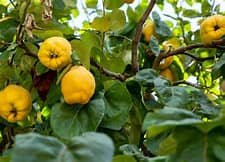
Where to buy quince tree seedlings in Kenya? Pasharn Fruit Nursery Ltd.
SKU: n/a


